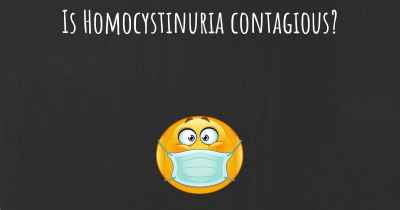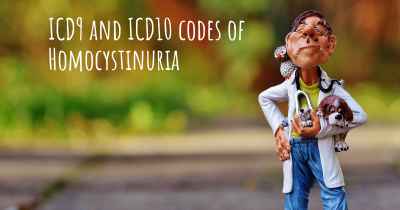What are the best treatments for Homocystinuria?
See the best treatments for Homocystinuria here

Homocystinuria is a rare genetic disorder that affects the body's ability to break down certain amino acids, leading to the buildup of homocysteine in the blood and urine. This condition can cause a range of symptoms, including developmental delays, intellectual disability, vision problems, skeletal abnormalities, and an increased risk of blood clots and cardiovascular disease.
While there is no cure for Homocystinuria, early diagnosis and appropriate treatment can help manage the symptoms and prevent complications. The primary goals of treatment are to lower homocysteine levels, prevent the occurrence of blood clots, and address any associated symptoms or complications.
Dietary Management
Dietary management plays a crucial role in the treatment of Homocystinuria. Individuals with this condition have difficulty metabolizing methionine, an amino acid found in protein-rich foods. Therefore, a low-protein diet is recommended to reduce the intake of methionine and subsequently lower homocysteine levels.
The specific dietary recommendations may vary depending on the individual's age, overall health, and severity of the condition. Generally, foods high in methionine, such as meat, fish, eggs, and dairy products, should be limited or avoided. Instead, individuals are encouraged to consume foods low in methionine, including fruits, vegetables, grains, and certain legumes.
In some cases, medical formulas or supplements may be prescribed to provide essential nutrients while minimizing methionine intake. These formulas are carefully formulated to meet the nutritional needs of individuals with Homocystinuria.
Vitamin and Mineral Supplementation
Vitamin and mineral supplementation is an integral part of the treatment plan for Homocystinuria. Certain vitamins and minerals, such as vitamin B6, vitamin B12, folate, and betaine, can help lower homocysteine levels and support overall health.
Vitamin B6 (pyridoxine) is commonly prescribed to individuals with Homocystinuria as it aids in the breakdown of homocysteine. Vitamin B12 and folate are essential for the production of red blood cells and can help reduce homocysteine levels. Betaine, a naturally occurring compound, can also assist in the breakdown of homocysteine.
Supplementation of these vitamins and minerals is typically tailored to the individual's needs and may require regular monitoring of blood levels to ensure optimal dosages.
Medication
In addition to dietary management and supplementation, medication may be prescribed to individuals with Homocystinuria to further reduce homocysteine levels and manage associated symptoms.
Pyridoxine (vitamin B6) is often used as a first-line medication, especially in individuals with certain types of Homocystinuria that respond well to this treatment. It helps convert homocysteine into cysteine, a different amino acid that can be metabolized by the body.
In cases where pyridoxine is not effective or suitable, other medications such as betaine or folate derivatives may be prescribed. These medications can help lower homocysteine levels and reduce the risk of complications.
Monitoring and Supportive Care
Regular monitoring of homocysteine levels, as well as other relevant blood markers, is essential to assess the effectiveness of treatment and make any necessary adjustments. This monitoring is typically done through blood tests and may require periodic visits to a healthcare professional.
Additionally, individuals with Homocystinuria may benefit from supportive care to manage specific symptoms or complications associated with the condition. This may include regular eye examinations, orthopedic interventions for skeletal abnormalities, and preventive measures to reduce the risk of blood clots and cardiovascular disease.
Conclusion
Homocystinuria is a complex genetic disorder that requires a comprehensive treatment approach. While there is no cure, a combination of dietary management, vitamin and mineral supplementation, medication, and regular monitoring can help individuals with Homocystinuria lead healthier lives and reduce the risk of complications.
It is important for individuals with Homocystinuria to work closely with a healthcare team, including geneticists, metabolic specialists, dietitians, and other relevant healthcare professionals, to develop a personalized treatment plan that addresses their specific needs and optimizes their overall well-being.








